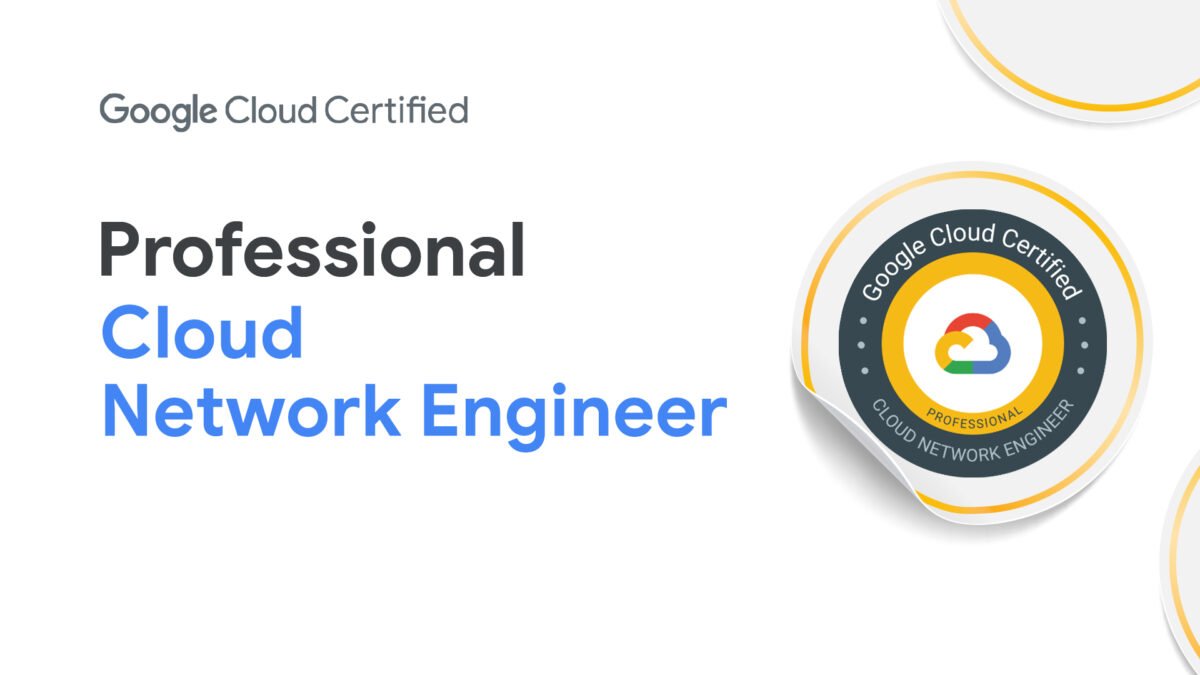Ace Your Professional Cloud Network Engineer Certification with Practice Exams.
Google Cloud Certified
– Professional Cloud Network Engineer –
Practice Exam (Question 5)
Question 1
You have recently been put in charge of managing identity and access management for your organization.
You have several projects and want to use scripting and automation wherever possible. You want to grant the editor role to a project member.
Which two methods can you use to accomplish this? (Choose two.)
- A. GetIamPolicy() via REST API.
- B. gcloud projects add-iam-policy-binding Sprojectname –member user:Susername –role roles/editor
- C. Enter an email address in the Add members field, and select the desired role from the drop-down menu in the Google Cloud Console.
- D. setIamPolicy() via REST API.
- E. gcloud pubsub add-iam-policy-binding Sprojectname –member user:Susername –role roles/editor
Correct Answer: B, C
Question 2
You want to use Google Cloud’s Partner Interconnect to connect your on-premises network with your VPC.
You already have an Interconnect partner.
What should you do first?
- A. Ask your Interconnect partner to provision a physical connection to Google.
- B. Create a Partner Interconnect type VLAN attachment in the Google Cloud Console and retrieve the pairing key.
- C. Run gcloud compute interconnect attachments partner update <attachment> / — region <region> –admin-enabled.
- D. Log in to your partner’s portal and request the VLAN attachment there.
Correct Answer: A
To provision a Partner Interconnect connection with a service provider, you start by connecting your on-premises network to a supported service provider. Work with the service provider to establish connectivity.
Reference contents:
– Partner Interconnect overview #Provisioning
Question 3
You want to configure load balancing for an internet-facing, standard voice-over-IP (VOIP) application.
Which type of load balancer should you use?
- A. HTTP(S) load balancer
- B. Internal TCP/UDP load balancer
- C. Network load balancer
- D. TCP/SSL proxy load balancer
Correct Answer: C
Question 4
Your company’s Google Cloud-deployed, streaming application supports multiple languages.
The application development team has asked you how they should support splitting audio and video traffic to different backend Google Cloud Storage buckets. They want to use URL maps and minimize operational overhead.
They are currently using the following directory structure:
/fr/video
/en/video
/es/video
/../video
/fr/audio
/en/audio
/es/audio
/../audio
Which solution should you recommend?
- A. Leave the directory structure as-is, create a URL map and leverage a path rule such as /*/video and /*/ audio.
- B. Leave the directory structure as-is, create a URL map and leverage a path rule such as \/[az]{2}\/video and \/[a-z]{2}\/audio.
- C. Rearrange the directory structure, create a URL map and leverage a path rule such as /video/* and /audio/*.
- D. Rearrange the directory structure, create DNS hostname entries for video and audio and leverage a path rule such as /video/* and /audio/*.
Correct Answer: C
Path matcher
Path matcher constraints Path matchers and path rules have the following constraints: A path rule can only include a wildcard character (*) after a forward slash character (/). For example, /videos/* and /videos/hd/* are valid for path rules, but /videos* and /videos/hd* are not. Path rules do not use regular expression or substring matching. For example, path rules for either /videos/hd or /videos/hd/* do not apply to a URL with the path /video/hd-abcd. However, a path rule for /video/* does apply to that path.
Reference contents:
– Using URL maps #Configuring URL maps | Load Balancing
– URL maps overview #Path matcher constraints | Load Balancing
Question 5
You decide to set up Google Cloud NAT.
After completing the configuration, you find that one of your instances is not using the Google Cloud NAT for outbound NAT.
What is the most likely cause of this problem?
- A. You have created static routes that use RFC1918 ranges.
- B. The instance has been configured with multiple interfaces.
- C. An external IP address has been configured on the instance.
- D. The instance is accessible by a load balancer external IP address.
Correct Answer: C

Comments are closed